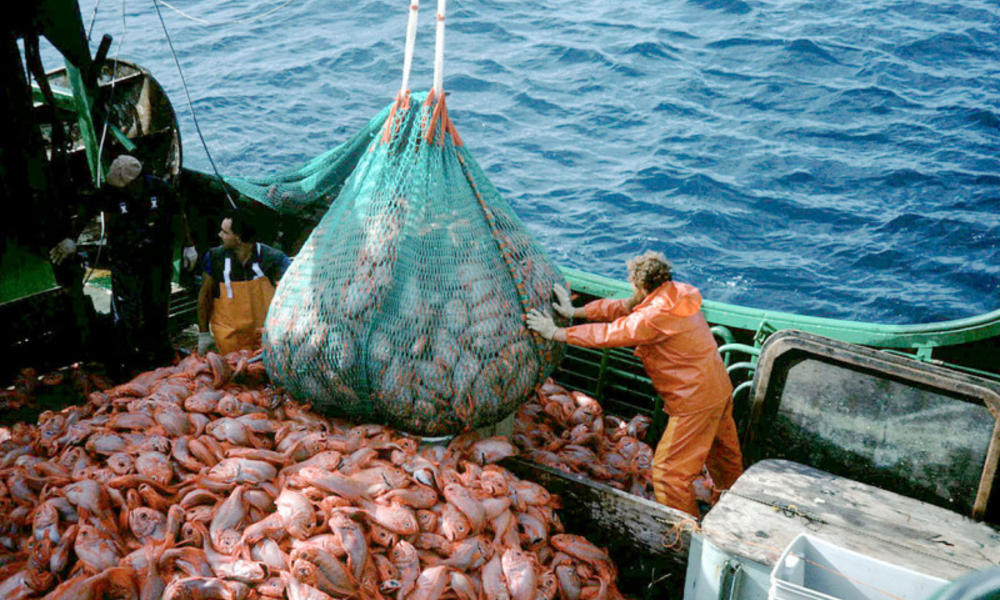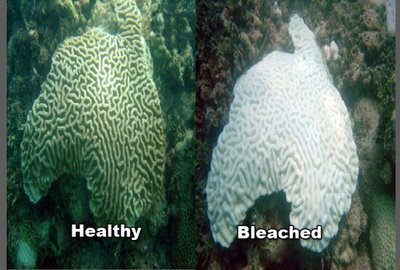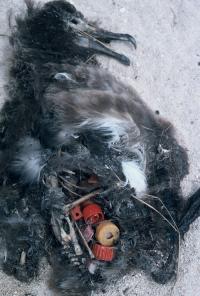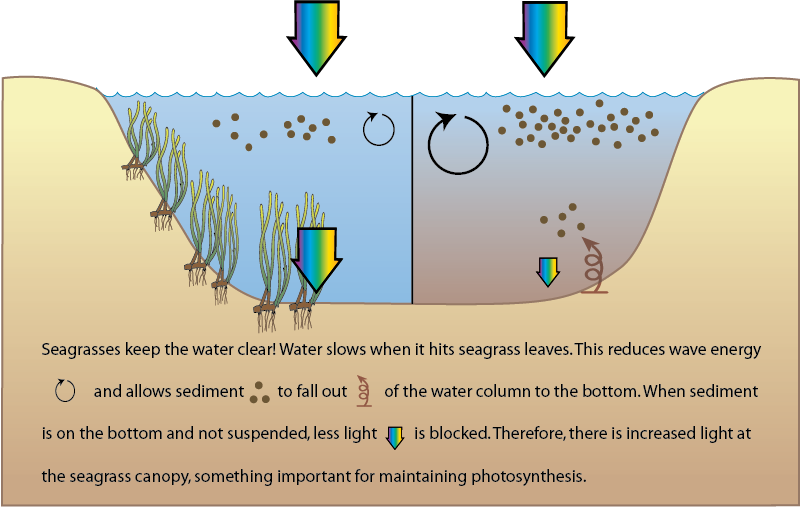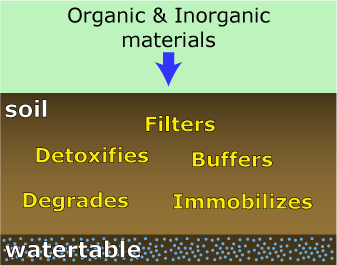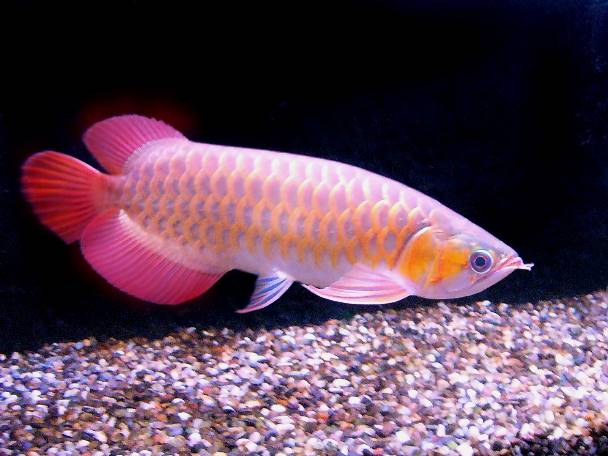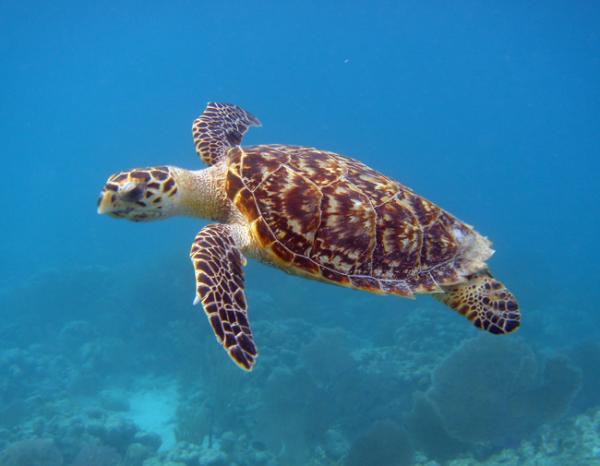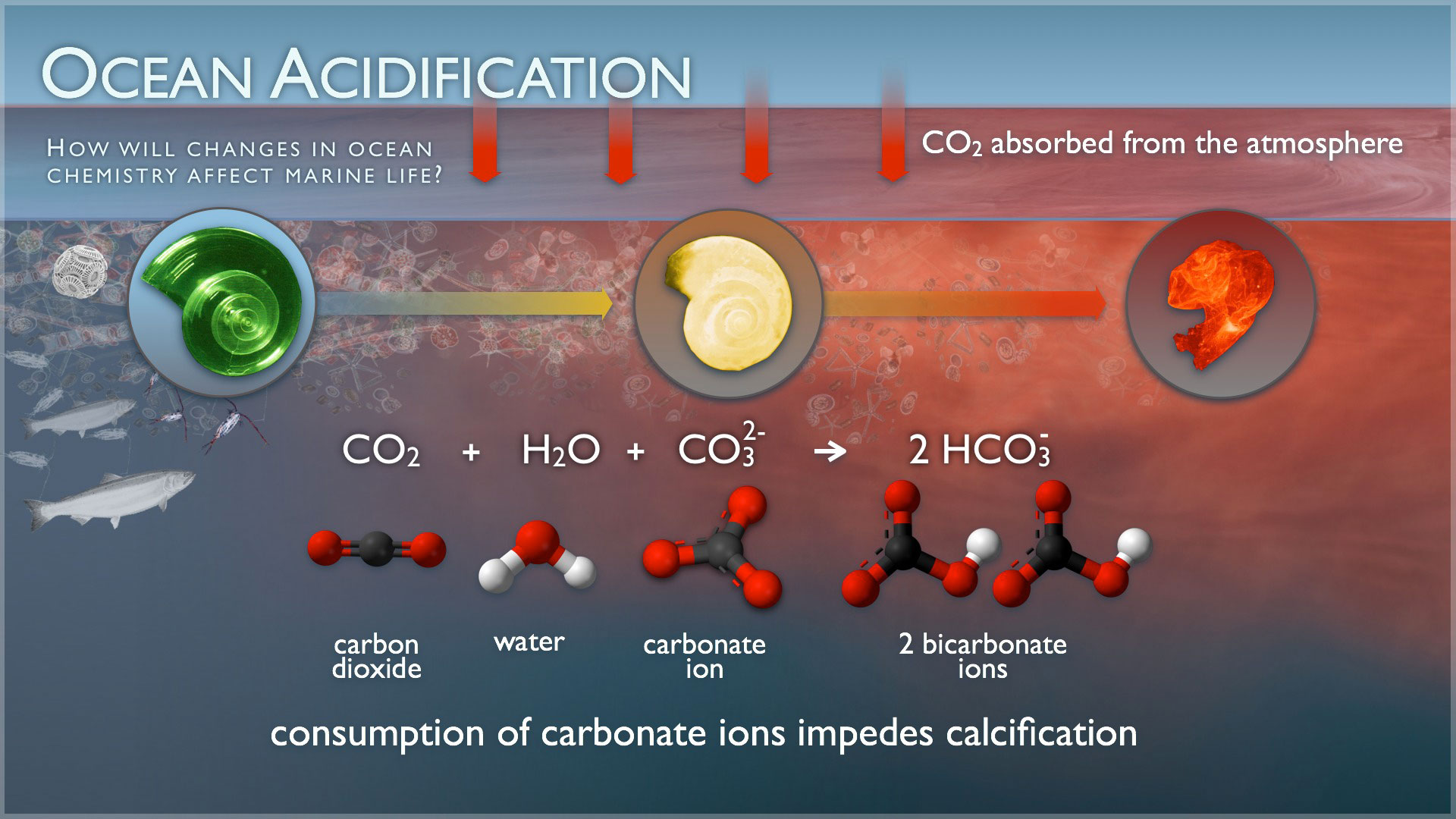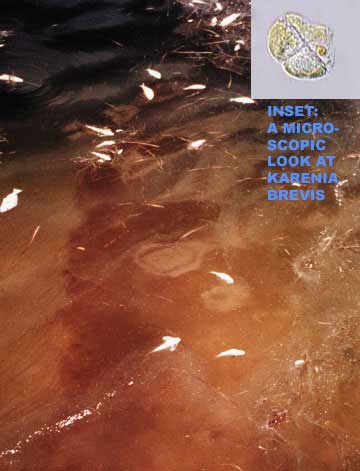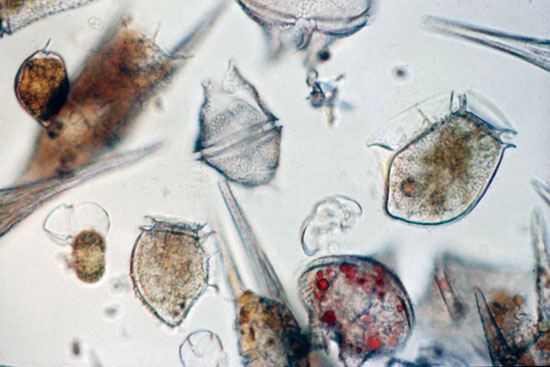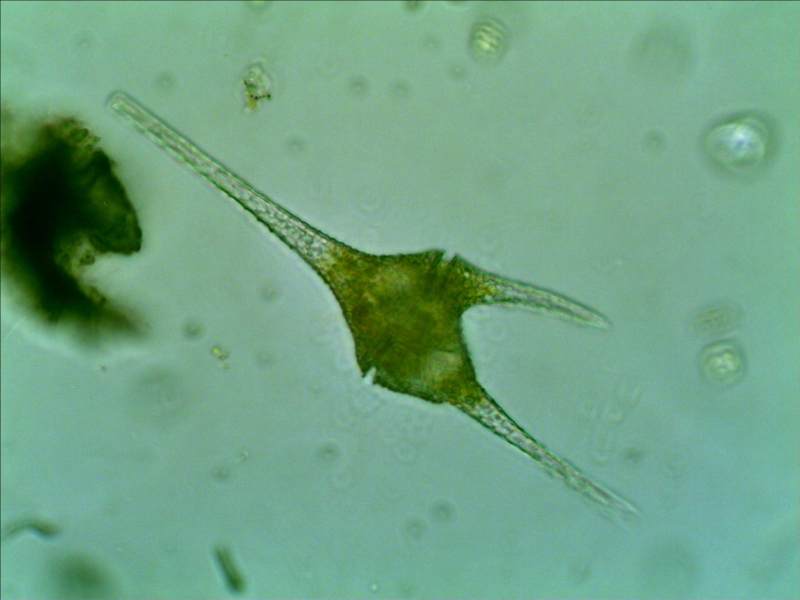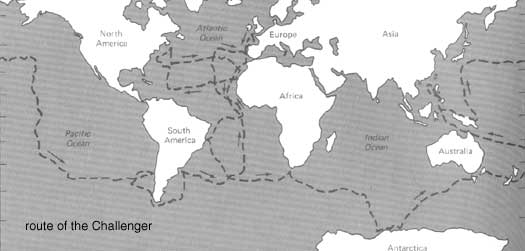Friday, March 22, 2013
Navy
The two cadets that came in to talk to the class were very informative! Allen put together a great presentation on him being in the Navy for 7 years, and all the education, traveling, military experiences he had been through. While he spoke mostly of working on a ship, his 20yr old partner was trained to work in submarines. What i found most interesting was all the places that Allen had been, 8 countries and 13 ports in the Philippines. This talk increased my knowledge of the ocean in how our military uses the ocean to their advantage. The one thing that I really remember from this presentation are his experiences in different countries, learning their cultures, shopping, and his lost wallet experience, mostly because of how different and interesting they were.
whales
Flukes are used to ID whales because they are like fingerprints, each different and unique.
Scientists need this data to learn and observe from the whales. Scientists can keep track of population and migration as well. The most difficult part of the lab was trying to match the pictures with the numerous other extremely identical pictures. The Lab would be easier and better if their were less pictures to match with, and if the printing was better instead of mostly black.
picture: http://wildwhales.org/wp-content/themes/wildwhales/images/4flukes_popup.jpg
Scientists need this data to learn and observe from the whales. Scientists can keep track of population and migration as well. The most difficult part of the lab was trying to match the pictures with the numerous other extremely identical pictures. The Lab would be easier and better if their were less pictures to match with, and if the printing was better instead of mostly black.
picture: http://wildwhales.org/wp-content/themes/wildwhales/images/4flukes_popup.jpg
over fishing
Over fishing is a major concern because fish become overexploited and depleted. Species and ecosystems are being lost. It affects our every day lives because as it affects the fish, it continuously affects the food web. Eventually it will affect our food sources. The choices we can make to help, are being educated and informed on the issue. Also, know where the food you are eating comes from!
picture: http://assets.worldwildlife.org/photos/1262/images/story_full_width/overfishing-overview-08022012-WEB_109842.jpg?1345541146
picture: http://assets.worldwildlife.org/photos/1262/images/story_full_width/overfishing-overview-08022012-WEB_109842.jpg?1345541146
Sunday, March 17, 2013
coral bleaching
Coral bleaching is generally caused by warm water temperatures, but can also be caused due to extreme cold water temperatures as well. While temperatures seem to be the major cause, it can also be caused by sediment, nutrients, and other changes in a reef's environment. The coral will rid itself of zooxanthella, losing a symbiotic relationship with an algae living within its tissue. Then the coral becomes white. It is under great stress, both the hot-stress and cold-stress make the coral susceptible to disease and death.
picture: http://25.media.tumblr.com/tumblr_m0v0qcgRC01r8x2ybo1_400.jpg
picture: http://25.media.tumblr.com/tumblr_m0v0qcgRC01r8x2ybo1_400.jpg
Problems caused by marine debris
Marine debris is a devastating problem for marine life. Entanglement is deadly, catching and killing thousands of fish and animals. There are many different types, but all are caused by mankind. One of the ways to reduce this problem would be to recycle more!
Plastic Bags: look like jelly fish and are ingested by animals, which can suffocate them.
Bottle Caps: often eaten by birds, and taken back to their young, also kill many animals.
Ghost Fishing: old nets and pots that are lost at sea continue to capture and kill animals.
6 pack rings: trap and strangle fish often drowning and even disfiguring them.
pictures:
1.http://www.gogreennation.org/wp-content/uploads/2009/06/turtle-plastic-bag-under-water-deep-sea-blue-ocean-garbage-trash-ecology-swim-fish-pollution-caught-shell-legs-toes-feet-head-photo-300x192.jpg
2.http://margot707.files.wordpress.com/2009/05/marine-debris-image_200.jpg?w=450
3.http://indiasendangered.com/wp-content/uploads/2011/07/g.jpg
4.http://conservationreport.files.wordpress.com/2009/04/mae-west-turtle-plastic-ring.jpg
Plastic Bags: look like jelly fish and are ingested by animals, which can suffocate them.
Bottle Caps: often eaten by birds, and taken back to their young, also kill many animals.
Ghost Fishing: old nets and pots that are lost at sea continue to capture and kill animals.
6 pack rings: trap and strangle fish often drowning and even disfiguring them.
pictures:
1.http://www.gogreennation.org/wp-content/uploads/2009/06/turtle-plastic-bag-under-water-deep-sea-blue-ocean-garbage-trash-ecology-swim-fish-pollution-caught-shell-legs-toes-feet-head-photo-300x192.jpg
2.http://margot707.files.wordpress.com/2009/05/marine-debris-image_200.jpg?w=450
3.http://indiasendangered.com/wp-content/uploads/2011/07/g.jpg
4.http://conservationreport.files.wordpress.com/2009/04/mae-west-turtle-plastic-ring.jpg
Puffer fish
Common Name: Puffer Fish or Blowfish
Scientific Name: Tetraodontidae
Adaptations: Can fill its stomach with both water and air to become much larger than its original size, not looking so tiny and vulnerable. Some species also have a spine on its skin.
Hunting Strategies: Contain tetrodotoxin which is extremely poisonous to both fish and humans
Reproduction: Many times the male watches over the eggs, and in some species the male builds a sort of nest to attract a female.
Interesting Facts:
1. fills stomach with water to inflate many times larger than original size
2. is a carnivore
3. can be 1 in long up to around 3 ft in length
4. there is no anecdote for its toxins
I chose this animal because I thought that it would be interesting to learn about.
Scientific Name: Tetraodontidae
Adaptations: Can fill its stomach with both water and air to become much larger than its original size, not looking so tiny and vulnerable. Some species also have a spine on its skin.
Hunting Strategies: Contain tetrodotoxin which is extremely poisonous to both fish and humans
Reproduction: Many times the male watches over the eggs, and in some species the male builds a sort of nest to attract a female.
Interesting Facts:
1. fills stomach with water to inflate many times larger than original size
2. is a carnivore
3. can be 1 in long up to around 3 ft in length
4. there is no anecdote for its toxins
I chose this animal because I thought that it would be interesting to learn about.
picture: http://www.scenicreflections.com/files/Puffer_Fish_Wallpaper_33w87.jpg
adaptations of sea grass
Sea grass has had to adapt due to the fact that it was once a terrestrial plant, meaning that it grew on land. Unlike on land, the plant would need to have a high salinity tolerance to survive, and be rooted in the soil, able to withstand strong tidal currents. The decaying leaves of the grass provide food and nutrients to numerous bacteria. Sea grass also is shelter to many small marine animals, providing a feeding ground for larger animals.
A resident is a marine animal that lives permanently in sea grass.
A migrant is an animal that migrate back and forth from the sea grass to a coral reef.
A traveler is an animal that tends to travel long distances and only rarely goes to see grass.
A resident is a marine animal that lives permanently in sea grass.
A migrant is an animal that migrate back and forth from the sea grass to a coral reef.
A traveler is an animal that tends to travel long distances and only rarely goes to see grass.
pictures
1.https://blogger.googleusercontent.com/img/b/R29vZ2xl/AVvXsEjrU5-8S9LEmQvKdhihwCy26WK5PKA5aBwHCF04FIugGdb5D6UZ7v9g0JEf0IlliFXodVCCHl01mFDDhh4ed3VwfXHaELeGqMjdHfappNeKBFi6SiYq80Hs_GrLMBbgl4dGRT20D8S-fX8/s1600/Sea+urchin.jpg
2. http://change.nature.org/wp-content/uploads/sea-grass-puffer-fish.jpg
3. http://www.digitaltrends.com/wp-content/uploads/2011/05/Dolphins-talk-language.jpg
Friday, March 8, 2013
Benefits of sea grasses
5 benefits that seagrasses provide for the marine ecosystem and man:
1-is an essential habitat that offers shelter and food to more than 40,000 fish.
picture:http://katlynbritneylori.edublogs.org/files/2010/05/med_seagrass_beds_pgVI.jpg
2-it filters both harmful toxins and pollutants
picture: www.teachoceanscience.net/images/seagrass_flow_diagram_lge.png
3-seagrass meadows lessen the effects of of harsh currents
picture :http://www.teachoceanscience.net/images/seagrass-aerial1_lge.jpg
4-binds sediment which helps to prevent erosion
picture: http://www.seos-project.eu/modules/coralreefs/images/Ecological%20values.png
5-providing a home to so many fish creates an essential place for fisheries to find fish
picture:https://blogger.googleusercontent.com/img/b/R29vZ2xl/AVvXsEjC5kobvMEzcc5mp6Wm1nYFN8L9Deu72UZ8Opip4vfB7DFaDOPhboAv0pP5dUDzTg0oTStsaq-UjQx0lUvDvzyD6-gRxrQhRmiVrzq37ukEVCjTV8H_VUXi7cX2MaV_bknkWlDz-ZV3K0O7/s1600/1_222-2254_IMG_adj_Steven+Lutz.jpg
1-is an essential habitat that offers shelter and food to more than 40,000 fish.
picture:http://katlynbritneylori.edublogs.org/files/2010/05/med_seagrass_beds_pgVI.jpg
2-it filters both harmful toxins and pollutants
picture: www.teachoceanscience.net/images/seagrass_flow_diagram_lge.png
3-seagrass meadows lessen the effects of of harsh currents
picture :http://www.teachoceanscience.net/images/seagrass-aerial1_lge.jpg
4-binds sediment which helps to prevent erosion
picture: http://www.seos-project.eu/modules/coralreefs/images/Ecological%20values.png
5-providing a home to so many fish creates an essential place for fisheries to find fish
picture:https://blogger.googleusercontent.com/img/b/R29vZ2xl/AVvXsEjC5kobvMEzcc5mp6Wm1nYFN8L9Deu72UZ8Opip4vfB7DFaDOPhboAv0pP5dUDzTg0oTStsaq-UjQx0lUvDvzyD6-gRxrQhRmiVrzq37ukEVCjTV8H_VUXi7cX2MaV_bknkWlDz-ZV3K0O7/s1600/1_222-2254_IMG_adj_Steven+Lutz.jpg
Sunday, March 3, 2013
Marine Video Issue
The video "Investigating Ocean Pollution" by the Scripps Institution of Oceanography in California explores California's Bay. A research team is investigating industrial pollution at 6 different places in the Bay. Led by Demitri Deheyn, tests a common species of starfish from clean ocean water into the bay full of pollutants, and garbage. The video goes through all experiments made and how and why each step in the procedures were taken. Deheyn explains how the Brittle Stars did not survive very well but did not die. He also explained that the pollution sunk into and was absorbed by the sediment. If the pollutants cannot find sediment to attach to, it will find an organism. This video explains how industrial pollutants effect specific species of animals. It was extremely informative.
http://www.youtube.com/watch?v=hjI7etw5rME
http://www.youtube.com/watch?v=hjI7etw5rME
Pollution
Problems caused by plastics in the ocean:
monofilament: Monofilament fishing line entangles animals strangling and killing them.
(picture:http://upload.wikimedia.org/wikipedia/commons/thumb/e/e7/Filet_de_pêche_DSC00632.JPG/220px-Filet_de_pêche_DSC00632.JPG)
entanglement: Over 267 species have been found to be harmed from entanglement. Entanglement can be from fishing line, plastic bags, 6 packs, etc. It causes suffocation, drowning and starvation.
(picture: http://www.crimemuseum.org/element/humpback.jpg)
Plastic bags: Many animals ingest plastic bags thinking they are food, killing around 100,000 animals a year.
Ghost fishing: Ghost fishing is when old pots and nets catch fish, but since they cant get get out, it kills them.
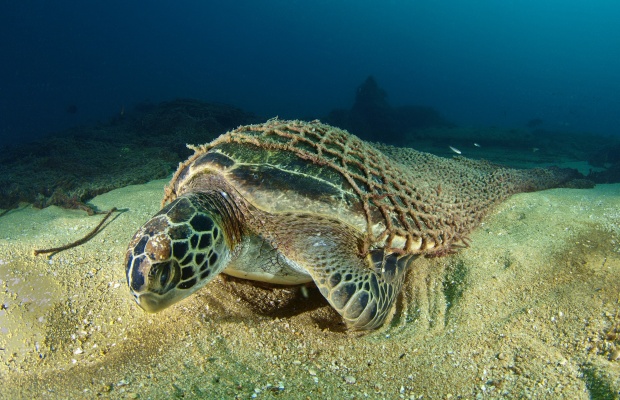
(picture: http://whalesandmarinefauna.files.wordpress.com/2011/03/a-green-sea-turtle-entangled-in-a-commercial-fishing-net.jpg)
Plastic Pellets: Small pieces of plastic broken off of large
monofilament: Monofilament fishing line entangles animals strangling and killing them.
(picture:http://upload.wikimedia.org/wikipedia/commons/thumb/e/e7/Filet_de_pêche_DSC00632.JPG/220px-Filet_de_pêche_DSC00632.JPG)
entanglement: Over 267 species have been found to be harmed from entanglement. Entanglement can be from fishing line, plastic bags, 6 packs, etc. It causes suffocation, drowning and starvation.
(picture: http://www.crimemuseum.org/element/humpback.jpg)
Plastic bags: Many animals ingest plastic bags thinking they are food, killing around 100,000 animals a year.
(picture: http://bagitmovie.files.wordpress.com/2011/05/plasticbag-turtle-web.jpg)

(picture: http://whalesandmarinefauna.files.wordpress.com/2011/03/a-green-sea-turtle-entangled-in-a-commercial-fishing-net.jpg)
Plastic Pellets: Small pieces of plastic broken off of large
(picture: http://oceanmotion.org/images/impact/confetti_plastic_pellets.jpg)
Benefits of mangroves
The Benefits of mangroves:
- Nursery: Mangroves provide a Nursery and safe home for baby fish and a variety of other marine animals.
- Nutrients: What falls from the mangroves is called leaf liter, that breaks down into nutrients and is the begins the basic food chain.
- Sediment: Mangroves hold the soil down stabilizing the sediment on the shoreline
- Toxins: Mangroves filter toxins and nutrients.
- Buffer System: Mangroves act as a buffer system to the land, lessening the strength of waves caused by storms
- Ecosystem Corridor: Provides habitat and a connecting zone in the ecosystem
1.http://mit.whoi.edu/cms/images/oceanus/mangrove-600_81252.jpg
2.http://www.nhmi.org/mangroves/pic/w59.jpg
3. http://www.ozcoasts.gov.au/conceptual_mods/processes/images/sediment_process.jpg
4.http://soilquality.org/images/filtering.gif
5.http://ncp-dev.stanford.edu/~dataportal/invest-releases/documentation/current_release/_images/BeachProfile.png
6.http://www.rivercare.org/local/upload/ckresized/73/corridor_map.jpg
adaptations of mangroves
Adaptations:
- Stability: The Red Mangroves Prop roots and the Black Mangroves widespread roots give the mangroves the stability it needs in the water and on the shoreline.
- Salt: While most plants cannot live in environments with extremely high salinity, mangroves salt tolerance allows it to thrive in extreme amounts of saline.
- Oxygen-poor: Mangroves grow in waterlogged soils which do not contain much oxygen. They have an adaptation of specialized roots that get gasses and air to the underground
- Viviparous: The seeds of the tree remain attached to the tree and germinate before they drop. It grows propagules and drops into the water until it can find soil.
- Seeds: Some mangroves have an adaptation of producing seeds that float, the tide carries them away and it avoids young plants being too close together
1.http://w3.shorecrest.org/~Lisa_Peck/MarineBio/syllabus/ch6producers/producerwp/cw/roots.gif
2.http://www.asknature.org/images/uploads/strategy/0ef4cce98e84127a384ff963259e4724/a3222d98ecae0afb0bd8758c7cea7a9c.jpg
3. http://ecology.hku.hk/jupas/Mangrove/Pneumatophores.gif
4. http://campus.albion.edu/florida08/files/2008/03/red-mangrove-seedling-propagule.jpg
5. http://oceanservice.noaa.gov/education/kits/estuaries/media/estuar07d_600.jpg
Arowana
Common Name: Arowana
Scientific Name : Osteoglossidae
Habitat: usually found in freshwater streams and rivers
Reproduction: The female watch over the young, and are a "mouth brooding" species
Prey: Carnivores, eat krill, worms, and shrimp
Interesting facts:
1. Jump out of the water
2. Have barbels that sense movement
3. lives approx 30 years
why: I chose this fish because it looks interesting and they are protected for being considered endangered.
photos: http://www.asia.ru/images/target/img/product/11/83/40/11834018.jpg
Scientific Name : Osteoglossidae
Habitat: usually found in freshwater streams and rivers
Reproduction: The female watch over the young, and are a "mouth brooding" species
Prey: Carnivores, eat krill, worms, and shrimp
Interesting facts:
1. Jump out of the water
2. Have barbels that sense movement
3. lives approx 30 years
why: I chose this fish because it looks interesting and they are protected for being considered endangered.
photos: http://www.asia.ru/images/target/img/product/11/83/40/11834018.jpg
Sunday, February 24, 2013
mangroves
There are 3 different main types of Mangroves: Black, Red, and White.
The Blank and Red Mangroves, while similar in height, have a few differences. The black Mangrove traps its oxygen with bristle like roots, and the seeds are edible! The Red Mangrove is an evergreen with aerial roots, while the White Mangroves are the shortest of the three. Mangroves provide many benefits that deserve to be protected. First, mangroves provide homes to many different plants and animals. They also protect shores from waves and protect against costal erosion. Another important aspect is that mangroves protect areas on land from storm damage. The Black Mangrove's wood is used for the making of fishing poles, as well as the White Mangrove which is also greatly used for other tools. All can provide shelter for fish, especially crab, all of these are very beneficial to fishing industries
photo: http://www.tomcravens.com/Red%20roots.JPG
The Blank and Red Mangroves, while similar in height, have a few differences. The black Mangrove traps its oxygen with bristle like roots, and the seeds are edible! The Red Mangrove is an evergreen with aerial roots, while the White Mangroves are the shortest of the three. Mangroves provide many benefits that deserve to be protected. First, mangroves provide homes to many different plants and animals. They also protect shores from waves and protect against costal erosion. Another important aspect is that mangroves protect areas on land from storm damage. The Black Mangrove's wood is used for the making of fishing poles, as well as the White Mangrove which is also greatly used for other tools. All can provide shelter for fish, especially crab, all of these are very beneficial to fishing industries
photo: http://www.tomcravens.com/Red%20roots.JPG
garbage patch
An ocean garbage patch is concentration of marine debris located in the North Pacific Ocean.
It is formed by man made liter and debris, especially tiny plastic pieces barely visible and nets. The fish and animals eat the plastics and get poisoned, or choke, on them, and can also get caught or harmed in the plastic. While attempts have been made to clean these garbage patches, it is mostly unsuccessful since they are so vast and changing. To stop this for the future, there should be stronger disposal and recycling requirements so less garbage can liter the ocean.
picture: http://assets.knowledge.allianz.com/img/pacific_ocean_garbage_patch_pollution_plastic_albatross_chick_q_48866.jpg
It is formed by man made liter and debris, especially tiny plastic pieces barely visible and nets. The fish and animals eat the plastics and get poisoned, or choke, on them, and can also get caught or harmed in the plastic. While attempts have been made to clean these garbage patches, it is mostly unsuccessful since they are so vast and changing. To stop this for the future, there should be stronger disposal and recycling requirements so less garbage can liter the ocean.
picture: http://assets.knowledge.allianz.com/img/pacific_ocean_garbage_patch_pollution_plastic_albatross_chick_q_48866.jpg
reptiles
Common name: Hawksbill Turtle
scientific name: Eretmochelys imbricata
Habitat: tropical shallow waters, near coastlines, coral reefs
adaptations: have a slow metabolic level so they can stay under water longer
status: endangered
current issues: their shells are internationally traded, as well as their meat and eggs
I picked this reptile because it is my favorite marine reptile and saw them when snorkeling in Hawaii
picture: http://www.animalspot.net/wp-content/uploads/2012/03/Hawksbill-Sea-Turtle-Pictures.jpg
scientific name: Eretmochelys imbricata
Habitat: tropical shallow waters, near coastlines, coral reefs
adaptations: have a slow metabolic level so they can stay under water longer
status: endangered
current issues: their shells are internationally traded, as well as their meat and eggs
I picked this reptile because it is my favorite marine reptile and saw them when snorkeling in Hawaii
picture: http://www.animalspot.net/wp-content/uploads/2012/03/Hawksbill-Sea-Turtle-Pictures.jpg
Ocean acidification
Ocean acidification is the carbon dioxide pollution in the ocean. The ocean absorbs 1/4 of the carbon dioxide emitted into the atmosphere by people. It effects ocean life as small as plankton, making it more difficult for them to live and make them use more energy to find shelter. Since this effects the base of the food chain, it will be a domino effect to the larger animals. On a coast in California waters were even found to be corrosive. Some of this water could dissolve shells. Some scientists believe that the ocean's chemistry could be completely changed and the entire ocean ecosystem could be dead in one hundred years.
picture: http://pmel.noaa.gov/co2/files/pmel-oa-imageee.jpg
picture: http://pmel.noaa.gov/co2/files/pmel-oa-imageee.jpg
Monday, February 18, 2013
research:Karenia Brevis a dinoflagellate
The Karenia Brevis dinoflagellate creates harmful and very toxic algae blooms called florida red tides. These unicellular organisms may be microscopic, but their toxins (brevetoxins) can kill large quantities of fish and make people very sick. Neurotoxic shellfish poising (NSP) is caused by the ingestion of shell fish such as clams and mussels that have been contaminated with brevetoxins.
Symptoms found in humans may be:
-numbness of mouth, face, and limbs
-nausea
-vomiting
-headache
-slurred speech
-partial paralysis
-difficulty breathing
Brevetoxins lead to the death of numerous fish and animal mortalities.
The gulf coast is greatly effected by K. Brevis and Brevetoxins. The death of all the fish is less food for both people and larger fish, less bait, and causes sickness within people.
picture: http://serc.carleton.edu/images/microbelife/topics/red_tide_advanc.v2.jpg
Symptoms found in humans may be:
-numbness of mouth, face, and limbs
-nausea
-vomiting
-headache
-slurred speech
-partial paralysis
-difficulty breathing
Brevetoxins lead to the death of numerous fish and animal mortalities.
The gulf coast is greatly effected by K. Brevis and Brevetoxins. The death of all the fish is less food for both people and larger fish, less bait, and causes sickness within people.
picture: http://serc.carleton.edu/images/microbelife/topics/red_tide_advanc.v2.jpg
Plankton information!
This week we learned alot about plankton, such as all the different types. For starters, the two main classifications of phytoplankton vs zooplankton. Phytoplankton are plants that use photosynthesis and are producers. Zooplankton are animals that feed on phytoplankton. Plankton are very important to the ecosystem because they are the very base of the food chain/web. Phytoplankton or algae, can create algae blooms, both beneficial and harmful to the environment. Harmful Algae blooms, HABs produce toxins that can harm both fish and humans. The Red tide is an example caused by phytoplankton. Two types of Phytoplankton are Diatoms and Dinoflagellates. Diatoms are single celled algae, and Dinoflagellates have qualities of both zooplankton and phytoplankton.
pictures: http://www.commondreams.org/headlines06/images/0119-03.jpg
pictures: http://www.commondreams.org/headlines06/images/0119-03.jpg
Dolphin
Common name: Atlantic Spotted Dolphin
Scientific Name: Stenella Frontalis
Habitat: Only in the Tropical areas of the Atlantic ocean such as the Bahamas
Reproduction: Females give birth every one to five years
Status: Currently endangered
Interesting facts:
Major issues facing this animal: They are hunted and captured in the Caribbean Sea, for food and bait by fisheries.
I chose this animal because it seemed intriguing and is an endangered species
picture: http://www.seasky.org/reeflife/assets/images/dolphin_atlantic_spotted.jpg
Scientific Name: Stenella Frontalis
Habitat: Only in the Tropical areas of the Atlantic ocean such as the Bahamas
Reproduction: Females give birth every one to five years
Status: Currently endangered
Interesting facts:
- Considered an "acrobatic species" that likes to play and chase waves from boats
- can be underwater for 6 minutes, diving up to 60 meters
- make sounds for echolocation like chirping and whistling
Major issues facing this animal: They are hunted and captured in the Caribbean Sea, for food and bait by fisheries.
I chose this animal because it seemed intriguing and is an endangered species
picture: http://www.seasky.org/reeflife/assets/images/dolphin_atlantic_spotted.jpg
Plankton Race
The most difficult part of the plankton race was finding what material would sink the slowest consistency. To change my design I think it would work better if each time I was able to use a new Post-it, because after it was immersed in water the first time it sunk quicker. I liked the hands on approach to this project best. I enjoy learning through trial and error rather than just being told which is going to sink quicker.
HAB (harmful algae bloom)
Algal blooms are large populations of algae, and in most cases are not harmful. However, some algae blooms can produce toxins that harm both fish and humans. Algae blooms are formed due to their environments, usually warm and nutrient filled water. In order to prevent these harmful blooms, scientists try to predict where they will be with satellites. If the pollution that some algae thrive off of was lessened, it would also help to prevent the growth of the blooms. The Long Island Scallop fishery had to be continuously closed due to HABs, and this is just one example of a place effected by Harmful Algae Blooms.
picture: http://www.whoi.edu/cms/images/lstokey/2005/1/v43n1-sengco2en_5571.jpg
picture: http://www.whoi.edu/cms/images/lstokey/2005/1/v43n1-sengco2en_5571.jpg
Sunday, February 10, 2013
plankton
Plankton are the beginning of the food chain, starting with small fish, keeps the food chain in the ocean in order. Then as the fish are larger it is beneficial to people as a food source. Plankton also provides oxygen in the ocean, and they can consume carbon dioxide and even bacteria. A diatom is a group of algea that is single-celled and a dinoflagellate is unicellular as well but with two flagellas.
Picture: http://arch.ced.berkeley.edu/hiddenecologies/wp-content/uploads/2006/06/diatom-hhss051009-no6-229.jpg
Diatom:
picture 2: http://microscopetalk.files.wordpress.com/2010/10/dinoflagellate_-ceratium.jpg
Dinoflagellates
Invertebrate: Sea star
Common Name: Sea Star
Scientific Name: Asteroidea
Adaptations: A sea star has five arms, if one of them is cut off it can regenerate or grow back.
Habitat: live on the sea floor
Interesting facts: sea stars have no brain, only nerve center that allows information to pass within the star, they are also omnivorous
I chose a sea star knowing it was an invertebrate from the Fish ID.
Photo: http://www.dreaminginpixels.com/gallery/wildlife/water-world/sea-star/seastar004.jpg
Scientific Name: Asteroidea
Adaptations: A sea star has five arms, if one of them is cut off it can regenerate or grow back.
Habitat: live on the sea floor
Interesting facts: sea stars have no brain, only nerve center that allows information to pass within the star, they are also omnivorous
I chose a sea star knowing it was an invertebrate from the Fish ID.
Photo: http://www.dreaminginpixels.com/gallery/wildlife/water-world/sea-star/seastar004.jpg
The Challenger Expedition
The Challenger Expedition was a ship that went on a four year expedition to explore the vast ocean from 1872-1876. It was led by John Murray and Charles Wyville Thompson. Sailing a distance of almost 69,000 miles around the South Atlantic, Hawaiian Islands, South America, and more, it collected and discovered more than 4,700 new species. Because The Challenger Expedition was one of the first of its kind, it encouraged other countries to begin exploring the ocean as well, beginning a race of ocean exploration.
Photo: http://enderender.files.wordpress.com/2010/11/chall.jpg
Photo: http://enderender.files.wordpress.com/2010/11/chall.jpg
History of oceanography changing
Picture: http://clccharter.org/hunter1/Challenger/hms-challenger.jpg
Why we should study the ocean
There are many reasons why we should be exploring the ocean. One of which is simply the fact that we know very little about it, and knowledge is power. If we knew more about the ocean, it would impact our technology, help gain valuable resources such as gas, metals, and food sources as well. Exploring the ocean also gives us a better understanding of sea life, which is important for our food source.
Photo from: http://www.dramsch.net/uploads/ExploreTheOcean.png
Photo from: http://www.dramsch.net/uploads/ExploreTheOcean.png
Monday, February 4, 2013
Boat project completed
Our boat had an average time of 3.15 seconds, although we succeeded with a fairly fast time, our boat was not very consistent. We found through trial and error that it worked better with more weight (from the marbles) in the very front rather than in the back or evenly distributed. If we did this project again, I would probably do a different body style, like waterbottles, instead of using styrofoam. I enjoyed doing this as a project rather doing something like a test. 
Subscribe to:
Posts (Atom)


